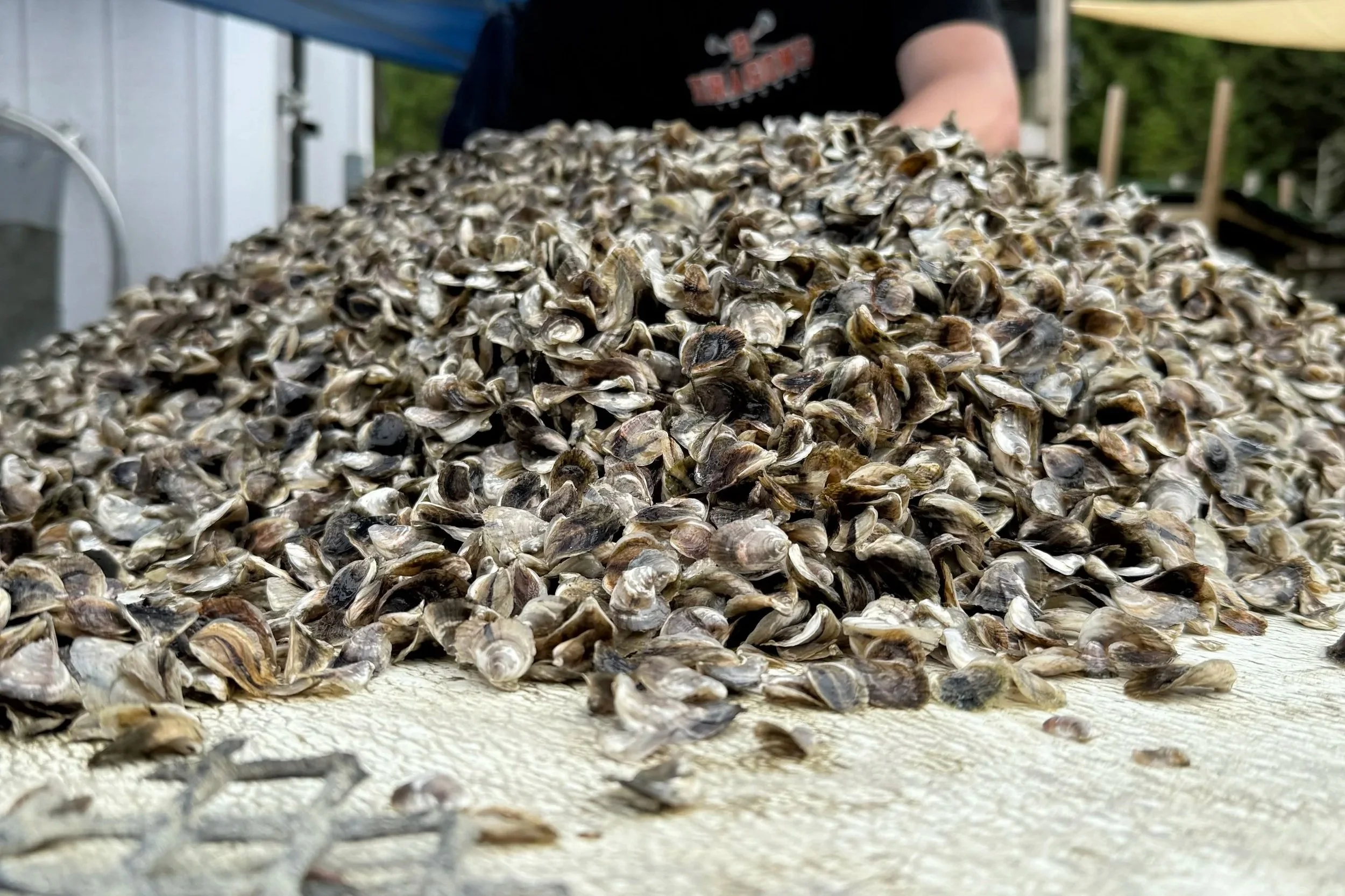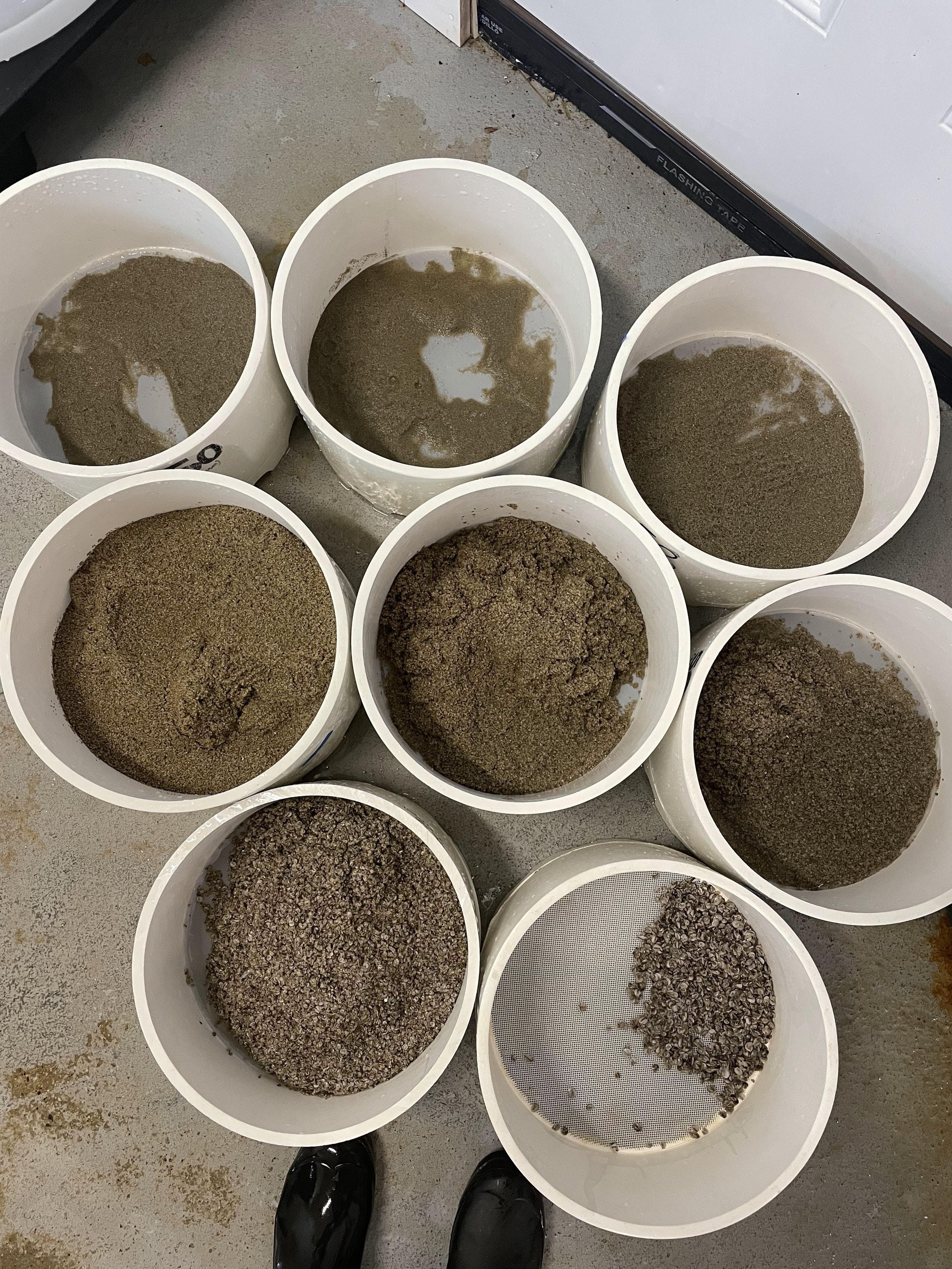Our Seed
In Maine’s clean waters, we produce shellfish seed with strong, fast-growing, disease-resistant genetics. Our team cultivates diverse algae strains to supply balanced nutrition for our seed.
Oyster
Crassostrea virginica
Our hatchery is built on a commitment to producing strong, reliable oyster seed—providing a healthy foundation whether you're starting out or growing your farm.
Hard Clam
Mercenaria mercenaria
We partner with towns to supply hard clams (quahogs) for reseeding efforts, helping restore local clam populations and support sustainable coastal ecosystems.
Spisula solidissima
Surf Clam
Our surf clam seed has shown outstanding growth and resilience in Mid-Atlantic research trials, outperforming industry averages. Add Atlantic surf clams to your operation and expand your farm with a proven performer.
Why Farmers Choose Our Seed
We are a hatchery for growers: Unlike many other hatcheries, we don’t raise oysters to market size or operate our own farm—ensuring that our customers always come first and receive our highest-quality product.
Disease Resistant: Merrymeeting Shellfish Company works in partnership with universities, growers and municipalities to provide the most up to date disease resistant stocks.
Selective Broodstock: We use multiple broodstock lines that have been selectively bred for genetic performance, shape, and fast growth. These lines have proven to yield superior seed optimized for Northeast waters, and adaptable to a range of growing conditions beyond.
Targeted Nutrition: Our seed is carefully cultivated from broodstock through embryo, larvae, post-set, and into juvenile seed. We dedicate extensive effort to producing nutrient-rich algae tailored to each stage of development.
Pathology Tested: Every seed lot undergoes pathology testing by an accredited lab to ensure health and quality.
Experienced Team: We bring deep technical know-how and 30+ years of experience in producing top-quality seed. Our staff keeps track of the latest developments in shellfish and algae production to help protect your crop and investment.
Frequently Asked Questions
-
Yes. We hybridize with Rutgers North East High Survival Line which is MSX resistant. While this does not guarantee complete immunity of our shellfish, it significantly reduces their vulnerability and increases survival in the presence of this disease.
-
Seed should be acclimated and put into their growing waters asap the day after shipping. We pack and ship to ensure the shellfish are out of the water for 24 hours. We do not advise waiting an additional day.
-
After receiving seed, the animals should be allowed to warm up slowly to acclimate to the water temperature. We advise placing your hand in the water and dripping the package of animals with water from where they are going, and then flipping the parcel and doing the same. Let the parcel sit and repeat the process until the temperature of the parcel is the same as the water and the shellfish are fully acclimated.
-
A full pathology is completed on every lot of our seed at an accredited lab before they leave the hatchery. This is a requirement of the State of Maine. We submit the reports to the State of Maine and State of Massachusetts with every lot for compliance. Should you be ordering from another state please check with your state's regulatory body. We can furnish them or you with a copy of the lab report.
-
We cultivate oyster (Crassostrea virginica), hard clam (Mercenaria mercenaria), and surf clam (Spisula solidissima) seed.
-
All seed we ship is viable upon receipt but we are not responsible beyond that. This is due to the wide variability in handling, environmental conditions, and growing practices beyond our control.
-
Our sieves are made from very expensive calibrated cloth and are entirely accurate. It is important to note that there is always a range within a given cohort growth, and our seed size is determined by the highest mesh size the seed will be retained on without falling through. Additionally, our sizing is a true sizing of the animal if they were to be measured. The reason why the size of the grid is different is due to the diagonal of the mesh graded on. For example, a 1mm animal is graded on a 25 US sieve/710 micron mesh.














